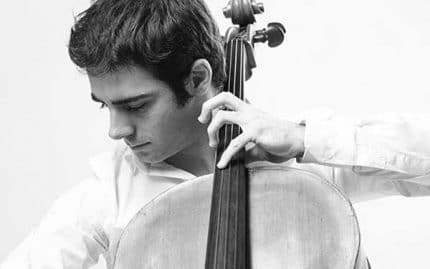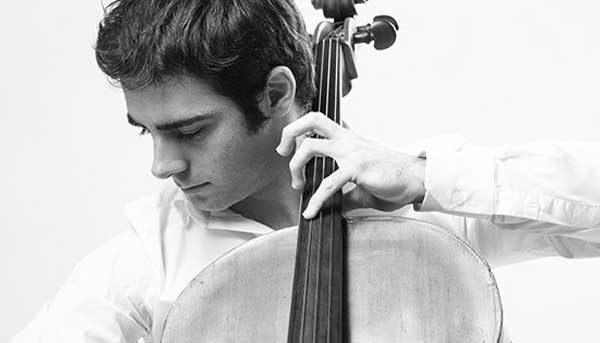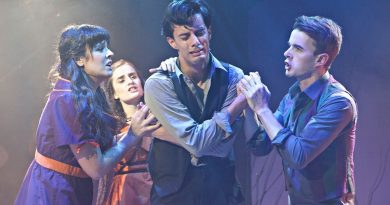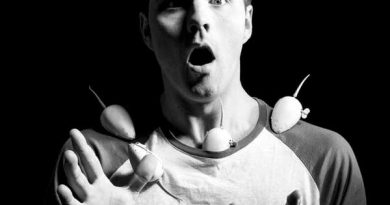A Layperson’s Night at the Orchestra – QSO Haydn and Sibelius.

As part of their Maestro series, the Queensland Symphony Orchestra presents Haydn and Sibelius.
Robert Trevino is a rapidly emerging American conductor and is making his Australian debut as guest conductor for the Queensland Symphony Orchestra. He has worked with orchestras including the Munich Philharmonic, London Philharmonic, San Francisco Symphony, St Petersburg Philharmonic, and many others. Trevino is a very interesting conductor to watch as his calm and contained manner exudes a quiet confidence of total control over the music.
The concert began with Dvořák’s ‘Carnival Overture’. This piece was fast, energetic and bright. Its dynamics and mood changed suddenly- transitioning from a frenetic, carnival vibe, to a serene melody reminiscent of a gypsy ballad. The different instrumental sections went off on forays, but came back strongly together. I particularly enjoyed the featured oboe, and the strings melody underscored by woodwind. The use of a harp made sections bubbly, and a little celestial. Then suddenly there would be lumbering baseline that brought with it a sense of foreboding. The huge ending was exhilarating.
The highlight of the concert was Pablos Ferrández. At 25 years old, the Spanish cellist already has an impressive resume. He has played with orchestras including the Spanish National Orchestra, RTVE Symphony Orchestra, Orquesta Sinfónica del Principado de Asturias, Kremerta Baltica, Helsinki Philharmonic Orchestra, Vienna Symphony Orchestra, Mariinsky Orchestra and the St Petersburg Philharmonic. He also won the ICMA Young Artist of the Year in 2016, and was a prize winner at the XV International Tchaikovsky Competition.
For his Australian debut with the Queensland Symphony Orchestra, Ferrández plays Haydn’s ‘Cello Concerto in C’, the concert’s second item. Haydn originally wrote this concerto to retain star players in his orchestra, and it is clear why. It enables the virtuoso to exhibit their skills and utilise the full range of the cello-from base, growl notes, to soaring, sparkling highs. I love this piece- although, to be honest, you could play Baa Baa Black Sheep on the cello and I’d probably be in raptures. I fully disclose my bias for this instrument. This concerto is structured in the traditional sonata form- beginning with exposition where the audience is introduced to musical themes (motifs) that will return, followed by the development of those themes, and finally the recapitulation where the piece essentially comes full circle. The first movement begins with a simple but lively baroque motif, which is developed into something more intricate and complex. Ferrández savoured his frequent cello solos, and played with great fluidity and energy. The second movement was mellower with less flourish than the first, and (at the risk of pretention) it reminded me of swirling a sip of wine in your mouth and really luxuriating in the flavour. I loved the unexpected drop to base notes, and at times the cello and the orchestra seemed to be whispering to each other. It had tenderness, a melancholy and a longing to it. and floated gently to a stop. The third movement was bright and fast paced- it reminded me a little of the famous, grand start of Mozart’s Il Nozze di Fiagro- rapid, frenetic and quite showy. It built to a big finish, and deserved the audience’s extended applause.
It was quite captivating to watch Ferrández play throughout the concerto. He is almost casual as he awaits his entry, either dusting his leg, or offering encouraging smiles to orchestra members he happens to make eye contact with, but he maintains a connection to the music- rocking, occasionally conducting. He also has incredibly expressive eyebrows. When he plays, his full body in involved and often has his eyes closed, seemingly totally transported by the music.
‘Sibelius’s Symphony No. 2’ came after interval, and I have to say I did not enjoy it terribly much overall. Perhaps I am uncultured, but I agreed wholeheartedly with my companion who said later ‘That piece is why people don’t go to the orchestra’. It had a gentle beginning, and then plaintiff violins becoming insistent and strong. What was enjoyable was the section of incredibly precise pizzicato that moved between the various strong instruments. However, the whole piece felt disjointed, frenzied, and lacked a tangible melody, and at times, battle-like, with heavy percussion replete with thunderous drum rolls. It was a frenetic buzz, with a hint of menace. Various instruments would try to rise above the hubbub but would be swallowed back down. Then it became abruptly calm, almost sweet, until it brewed again and again. It felt like waves crashing over you, until a long, overly protracted finish. The finale was anti-climatic after the epic drama of the piece. Perhaps it was the lack of featured cello, but I was quite glad when this particular symphony finished after about fifty-five minutes. This was nothing to do with the orchestra’s performance, but rather my own personal taste. I read later that many believe the symphony was written about Finland’s struggle for independence from Russia. It has even been called the Symphony of Independence – I can’t say I saw that coming.
Overall, it was a lovely night at the orchestra. While I may not have enjoyed every piece, it is always good to be exposed to new things, especially those that you wouldn’t normally actively seek out. I will be seeking out more of Ferrández’s fabulous cello though.
QSO, Haydn and Sibelius played at QPAC’s Concert Hall on May 19.



